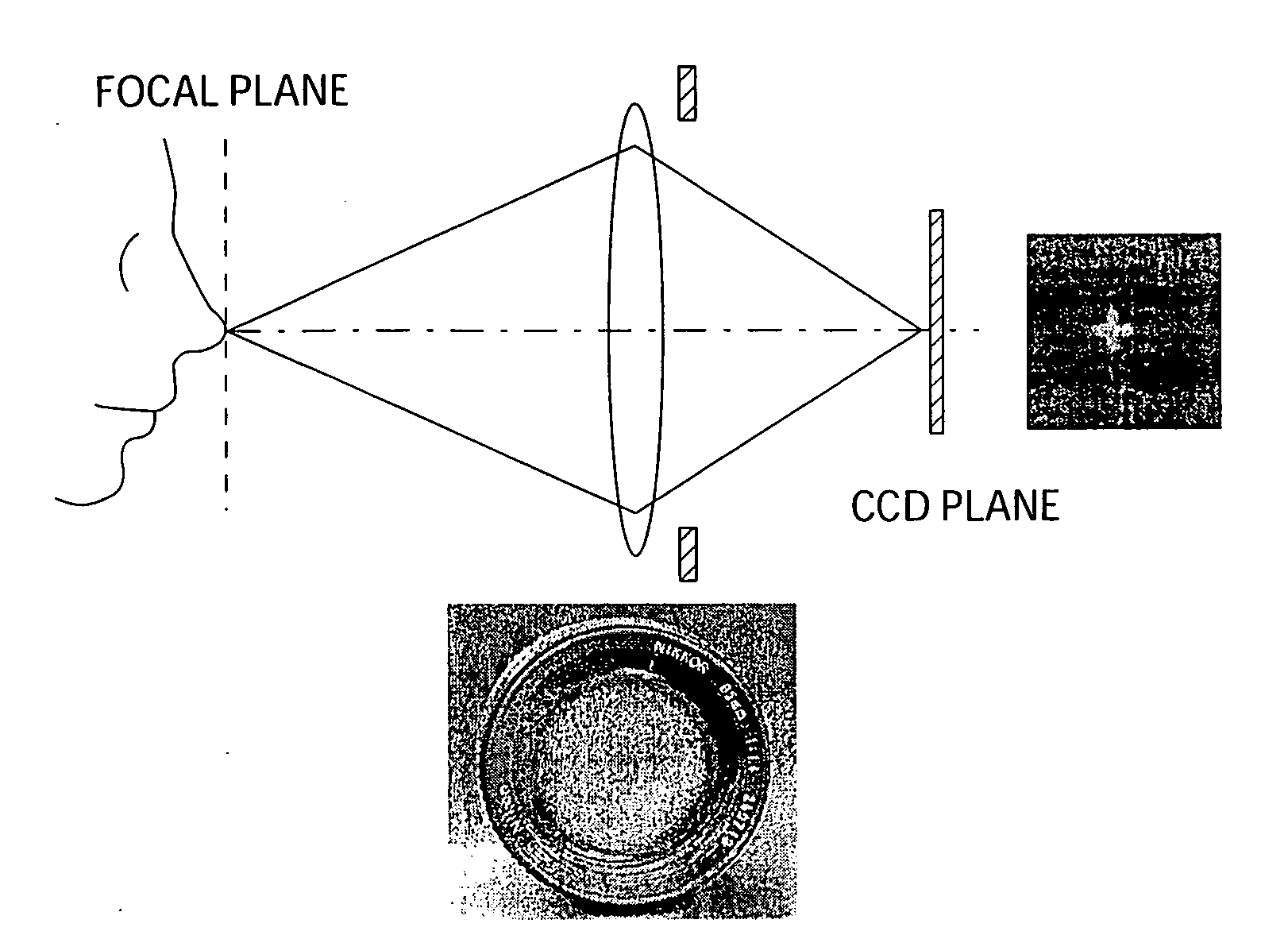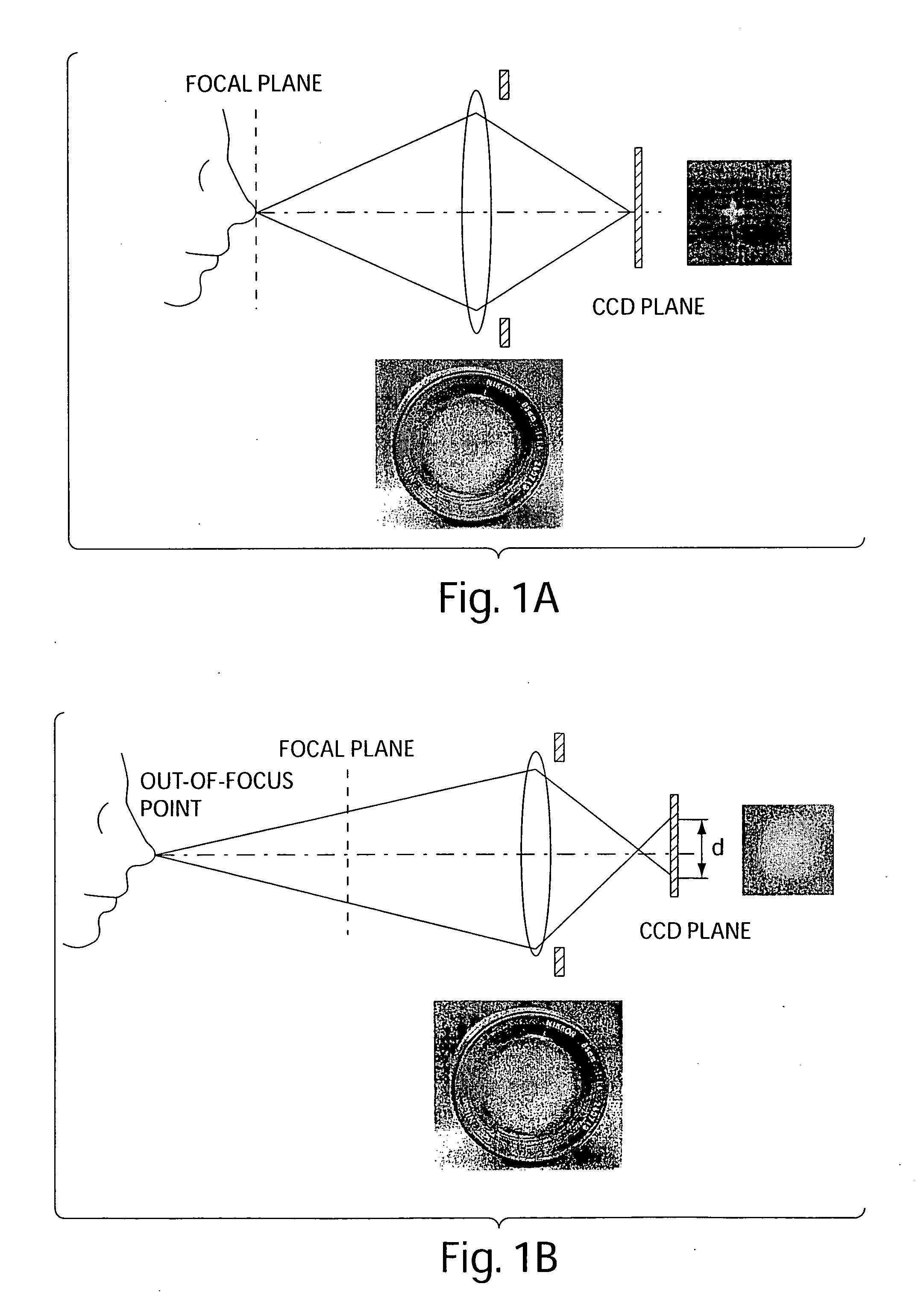Methods and apparatus for 3D surface imaging using active wave-front sampling
a technology of active wavefront sampling and surface imaging, applied in image analysis, image enhancement, instruments, etc., can solve the problems of wasting all quantitative depth information, wasting qualitative depth cues, and fooling the human observer
- Summary
- Abstract
- Description
- Claims
- Application Information
AI Technical Summary
Benefits of technology
Problems solved by technology
Method used
Image
Examples
Embodiment Construction
[0102]The active wavefront sampling (AWS) approach to 3D surface imaging has several attractive attributes. Its most important characteristic is that, unlike stereoscopic systems, it requires only one optical path to capture depth information. This attribute reduces system costs by halving the cost of the optics, and also allows the technique to be applied to a wide range of currently available 2D imaging systems such as cameras, endoscopes, and microscopes. AWS also reduces system cost by dispensing with expensive laser based target illuminators, and minimizes target acquisition time by not having to slowly sweep an illumination sheet across the target. Instead, the AWS approach can calculate a 3D depth map with as little as two image frames (like a stereo system), thereby allowing real time (>30 Hz) operation.
[0103]In order to understand the fundamental principle behind the use of AWS to calculate depth, one must first analyze how a target feature's depth is encoded by the diamete...
PUM
 Login to View More
Login to View More Abstract
Description
Claims
Application Information
 Login to View More
Login to View More - R&D
- Intellectual Property
- Life Sciences
- Materials
- Tech Scout
- Unparalleled Data Quality
- Higher Quality Content
- 60% Fewer Hallucinations
Browse by: Latest US Patents, China's latest patents, Technical Efficacy Thesaurus, Application Domain, Technology Topic, Popular Technical Reports.
© 2025 PatSnap. All rights reserved.Legal|Privacy policy|Modern Slavery Act Transparency Statement|Sitemap|About US| Contact US: help@patsnap.com



